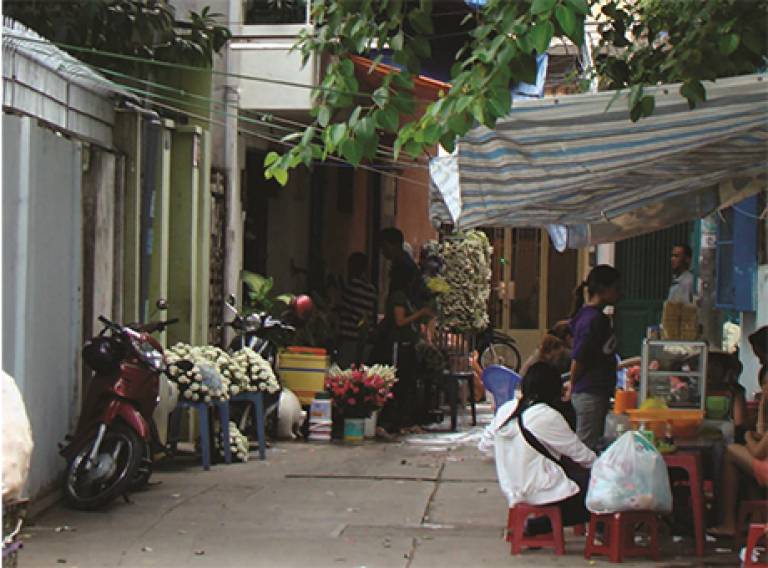Lanes and Neighbourhoods in Cities in Asia - DPU involvement
27 June 2016

This week Dr. Camillo Boano, Director of the MSc Building and Urban Design in Development (BUDD) and Urban Laboratory Co-Director and DPU PhD candidate Kisnaphol Wattanawanyoo will be presenting in Singapore at the conference “Lanes and Neighbourhoods in Cities in Asia” jointly organised by Asian Urbanisms Cluster at the Asia Research Institute, National University of Singapore, the International Institute for Asian Studies, and supported by University College London. Kisnaphol will present part of his doctoral work in a paper titled “’Soi Urbanism’ as Way of Life: The Bangkok Case of City-Making and the Creative Appropriation of the In-Between Everyday Territory” and Camillo a reflection on the action research done in Cambodia in the last three years in a paper titled "The Upside Down of Urban Design: Differential Inclusion and Neighbourhoods Belonging in Cambodia”.
Kisnaphol Wattanawanyoo’s presentation will examine Bangkok’s smallest urban unit of “soi” and “trok” community/neighbourhoods, which usually comprise of both the circulation network (soi and trok – small/narrow alley way or lane) and the community/neighbourhood surrounding them. In viewing Bangkok through this perspective, it provides an understanding of how the everyday city is made through the interaction of its inhabitants in these urban networks. The paper aims: 1) to understand the existing “soi” and “trok” community/neighbourhood in terms of their characters and their recent adaptation; 2) to theorise the everyday Bangkok through the concept of “soi urbanism”; 3) to explore how the city dwellers in these “soi” and “trok” communities/neighbourhoods reclaim the city and also express their political identity and existence. Kishnaphol ultimately argues that “soi urbanism” is central and influential to Bangkok city making and as a creative way of life. It is not just the spatial, temporal, social dimension, but also political as well.
Camillo’s paper begins from the premise that homes and neighbourhoods have conventionally been spatial realms of identification and belonging. Accordingly, such relations are now becoming unstable, and new types of consciousness, realms of operation and allegiance are being sought towards multiple multifarious belongings. In the attempt to circumscribe the notion of belonging, Camillo seeks to question its twofold meaning of belonging (“being in”, “being defined as such”) and as possession ("having"). When identity is conceived as performative and belonging as becoming, the repetition, reproduction and experimentation of certain spatial practices enables us to overcome the alienation of abstract space (produced by conflicts, migration, globalisation, commercialisation, etc.). Spaces re-appropriated through rituals become communal sites of embeddedness and new sites of resistances. Dispossessed, undesirable and marginalised communities that find themselves in such after belonging condition can thus acquire a 'presence', obtaining the potential for new collectivities to emerge. Grounding into ethnographic and action research done in the last three years with marginal, informal and relocated communities in Cambodia, Camillo’s paper aims to contribute to the debate around neighbourhoods as sites of resistance and new practice of city imagining and city making.
 Close
Close

